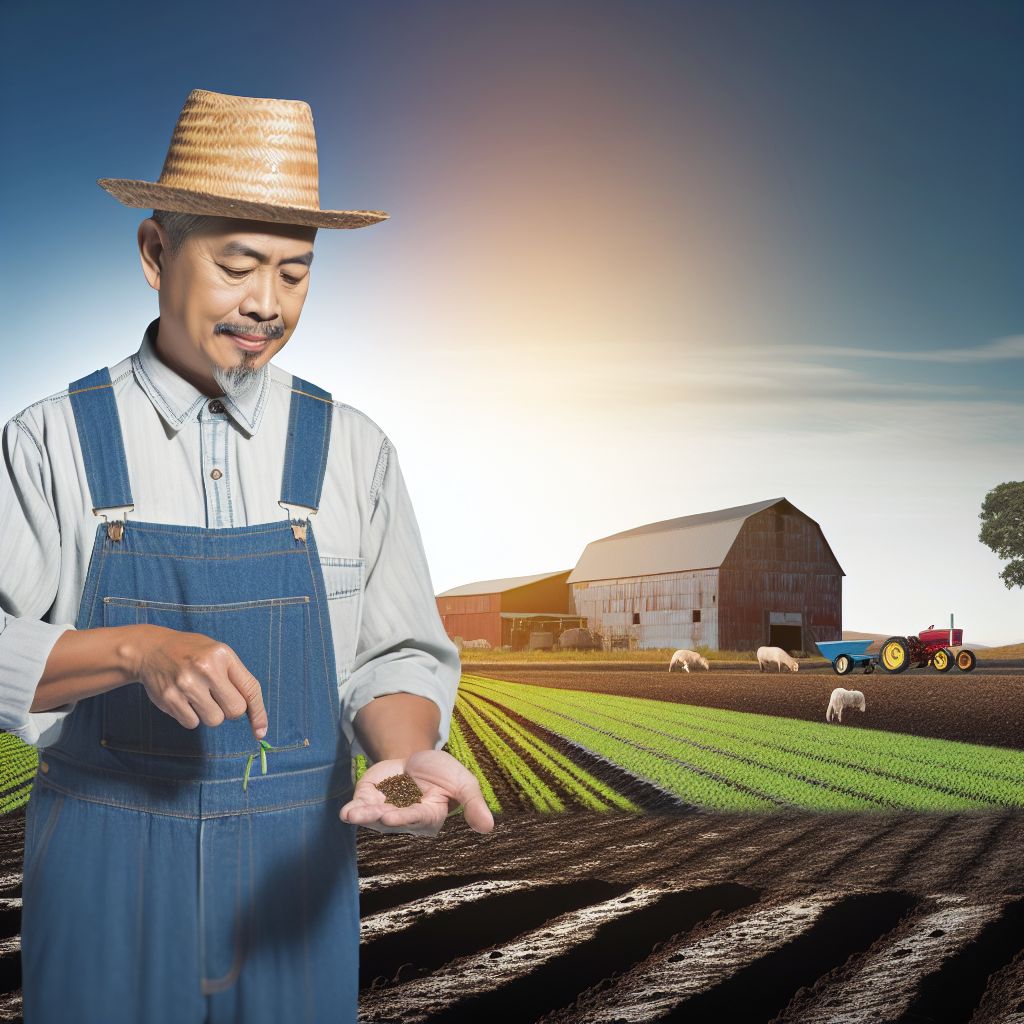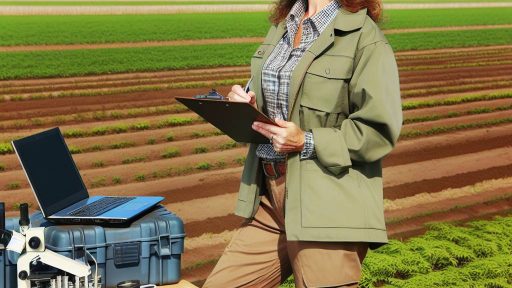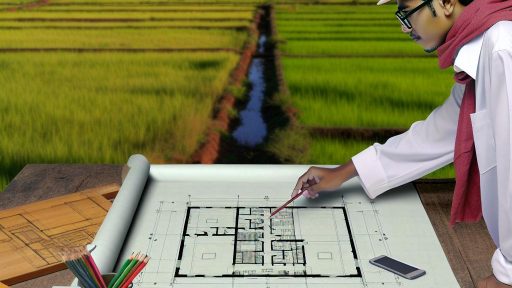Introduction to Regenerative Farming and Its Principles
Regenerative farming represents a holistic approach to agriculture.
This method goes beyond sustainability by restoring ecosystems.
Principles of regenerative farming include improving soil health.
Additionally, it enhances biodiversity on farmlands.
Farmers implementing these principles actively sequester carbon.
They also work to rebuild water cycles effectively.
Core Principles of Regenerative Farming
The core principles focus on building healthy soil ecosystems.
First, farmers prioritize cover cropping to protect soil.
Second, they rotate crops to enhance nutrient diversity.
Moreover, integrating livestock can enhance soil fertility.
This creates a symbiotic relationship between crops and animals.
Benefits of Regenerative Practices
Regenerative practices yield numerous environmental benefits.
For one, they increase resilience against climate change.
Additionally, these practices improve water retention in soils.
Farmers also witness increased crop yields over time.
Transform Your Agribusiness
Unlock your farm's potential with expert advice tailored to your needs. Get actionable steps that drive real results.
Get StartedUltimately, restoring soil health leads to healthier food systems.
Economics of Regenerative Approaches
From an economic perspective, regenerative farming offers promising returns.
Investors are increasingly recognizing its potential.
Long-term benefits outweigh initial setup costs significantly.
Furthermore, regenerative farms tend to outperform conventional farms.
The focus on sustainability attracts consumers willing to pay more.
Historical Context of Land Investment Strategies
Land investment has evolved significantly over centuries.
Historically, the acquisition of land symbolized wealth and power.
During feudal times, land ownership dictated social hierarchies.
Nobility controlled vast estates, shaping socio-economic structures.
In the 19th century, land investment shifted due to industrialization.
As cities expanded, demand for agricultural land increased.
This change led to the emergence of speculative land investments.
Investors sought opportunities in frontier regions, like the American West.
These trends had lasting impacts on land valuation.
By the 20th century, modern farming practices began to emerge.
Land was viewed not just as a status symbol but as a resource.
Investors turned towards sustainable practices, including organic farming.
This shift laid the groundwork for regenerative agriculture.
Regenerative farming focuses on restoring soil health and biodiversity.
It aims to create sustainable ecosystems that support food production.
Today, investors recognize the potential of regenerative practices.
These methods promise long-term returns and environmental benefits.
Furthermore, they contribute to climate resilience and societal needs.
Showcase Your Farming Business
Publish your professional farming services profile on our blog for a one-time fee of $200 and reach a dedicated audience of farmers and agribusiness owners.
Publish Your ProfileAs a result, land investment strategies increasingly prioritize sustainability.
This focus reflects a broader understanding of environmental responsibility.
Ultimately, the evolution of land investment strategies continues to unfold.
Comparative Analysis of Conventional vs. Regenerative Farming Practices
Overview of Farming Approaches
Conventional farming relies heavily on synthetic inputs and monocultures.
It often prioritizes short-term yields over long-term soil health.
Regenerative farming, by contrast, focuses on restoring ecosystem balance.
This method emphasizes sustainability and biodiversity integration.
Soil Health and Fertility
Conventional methods can lead to soil degradation and erosion.
Excessive tilling and chemical use disrupt soil microbes.
Regenerative practices enhance soil fertility through cover crops.
They also promote practices like crop rotation and composting.
Biodiversity and Ecosystem Support
Conventional farming reduces biodiversity in agricultural landscapes.
Single-crop systems limit habitat availability for wildlife.
Regenerative farming incorporates diverse plant species to support ecosystems.
This approach encourages beneficial insects and natural predators.
Water Use and Conservation
Conventional practices can lead to overuse and pollution of water sources.
High fertilizer input can contaminate groundwater and waterways.
Regenerative farming promotes water retention in soils.
Techniques like agroforestry and permaculture enhance water sustainability.
Economic Viability and Long-Term Returns
Conventional farming systems can yield higher short-term profits.
However, they often face higher risks due to soil depletion.
Regenerative farming may yield lower immediate returns.
In the long run, it fosters resilience and reduces input costs.
Carbon Sequestration and Climate Impact
Conventional farming contributes to greenhouse gas emissions.
In contrast, regenerative practices enhance carbon sequestration in soils.
These practices create a buffer against climate change impacts.
They contribute positively to overall air quality and climate stabilization.
Social and Community Influences
Conventional farming can drive small farmers out of business.
It often focuses on large-scale operations at the expense of local communities.
Regenerative farming fosters local food systems and community engagement.
It creates opportunities for smallholder farmers to thrive sustainably.
Uncover the Details: Soil Erosion Control Strategies for Waterfront and Hillside Properties
The Environmental Benefits of Regenerative Farming on Land Health
Improved Soil Quality
Regenerative farming enhances soil structure and fertility.
This approach increases organic matter content in the soil.
Healthy soil supports diverse plant life and microorganisms.
Moreover, it reduces erosion and promotes water retention.
Biodiversity Enhancement
Regenerative practices foster a diverse ecosystem on farms.
This variety boosts resilience against pests and diseases.
Additionally, it encourages beneficial insect populations.
Farmers see higher yields due to improved pollination rates.
Showcase Your Farming Business
Publish your professional farming services profile on our blog for a one-time fee of $200 and reach a dedicated audience of farmers and agribusiness owners.
Publish Your ProfileReduction of Chemical Inputs
This method minimizes reliance on synthetic fertilizers and pesticides.
As a result, it reduces the risk of chemical runoff into water sources.
Farmers often find that natural alternatives can be just as effective.
Furthermore, soil health is enhanced by natural processes.
Carbon Sequestration
Regenerative farming captures carbon dioxide from the atmosphere.
This process combats climate change by reducing greenhouse gases.
Healthy soils can store significant amounts of carbon.
Consequently, farmers contribute to global climate stabilization.
Improved Water Management
Regenerative methods enhance water infiltration and retention.
This reduces runoff and increases groundwater recharge.
Farmers benefit from more reliable water sources during dry seasons.
Additionally, healthier soils can support more robust crop yields.
Uncover the Details: Drought Preparedness Plans for Farmland Investors and Property Owners
Economic Advantages of Regenerative Farming in Long-Term Investment Returns
Increased Soil Health
Regenerative farming significantly improves soil health over time.
This enhanced soil quality boosts crop yields sustainably.
Healthy soil retains moisture and nutrients more effectively.
As a result, farmers face lower input costs.
Higher Crop Resilience
Crops grown with regenerative practices show greater resilience to climate variations.
This resilience translates to lower loss rates during adverse weather events.
Therefore, farmers can achieve more predictable returns.
Diverse Revenue Streams
Regenerative farming encourages diverse agricultural practices.
These practices open new revenue streams for farmers.
For instance, farmers can engage in agro-tourism or sell value-added products.
Consequently, they can enhance their overall financial stability.
Reduced Input Costs
Implementing regenerative techniques leads to lower input costs over time.
For example, reduced dependency on chemical fertilizers is evident.
Farmers can save significantly on these inputs, boosting profit margins.
Access to Premium Markets
Consumers increasingly prefer products from sustainable sources.
As a result, farmers using regenerative practices can access premium markets.
These markets often offer higher prices for products.
Consequently, farmers can enhance their profit potential.
Long-Term Land Value
Investing in regenerative farming practices increases land value over time.
Healthier ecosystems contribute to more productive land.
This improved productivity results in a higher resale value.
Furthermore, potential buyers recognize the benefits of sustainable practices.
Community and Economic Resilience
Regenerative farming strengthens community ties and local economies.
This approach fosters collaboration among farmers and consumers.
Communities benefit from increased local food production and employment.
As a result, overall economic stability in farming regions improves.
Find Out More: Key Soil Health Factors to Assess Before Buying Agricultural Land
Showcase Your Farming Business
Publish your professional farming services profile on our blog for a one-time fee of $200 and reach a dedicated audience of farmers and agribusiness owners.
Publish Your ProfileCase Studies Demonstrating Successful Land Investment Through Regenerative Practices
The Fischer Family Farm
The Fischer family transformed their conventional farm into a regenerative model.
They implemented crop rotation and cover cropping.
These practices improved soil health and increased biodiversity.
As a result, their yields improved significantly over five years.
Their land value also increased considerably during this period.
Sunny Meadows Ranch
This approach enhanced pasture health and reduced erosion.
They also integrated livestock into their cropping systems.
Consequently, the farm became more resilient to drought conditions.
Investors noted a remarkable increase in long-term returns.
Pine Valley Orchard
Pine Valley Orchard focused on organic practices and agroforestry.
They diversified their crop offerings to include fruits and nuts.
Water conservation techniques helped in maintaining productivity.
As a result, the orchard experienced higher customer demand.
Over time, property values rose as the business thrived.
Green Fields Agroecology Project
The Green Fields project emphasized biodiversity and ecosystem health.
Farming methods included intercropping and natural pest management.
These practices reduced input costs and boosted profitability.
Investors recognized the potential for long-term sustainable gains.
They were attracted to this regenerative investment model.
The Impact on Local Communities
Regenerative farming practices positively influenced local economies.
They created jobs and supported community engagement.
Farmers educated residents about sustainable practices.
This fostered a culture of environmental stewardship.
Investments in regenerative land practices benefit everyone involved.
You Might Also Like: Water Conservation Techniques for Sustainable Farm Real Estate Growth

Challenges and Limitations of Adopting Regenerative Farming for Investors
Initial Investment Costs
Investors often face substantial initial costs when shifting to regenerative practices.
This method may require new equipment and infrastructure upgrades.
In addition, soil amendments and cover crops can add to expenses.
Such upfront costs may deter some investors from making the switch.
Knowledge Gaps
Many investors lack the expertise required for regenerative farming techniques.
Without proper training, implementation can be inefficient and costly.
Moreover, the absence of skilled labor can hinder progress.
Investors need access to educational resources to overcome this hurdle.
Market Demand Variability
The market for regenerative products can fluctuate significantly.
Consumers’ awareness and appreciation of these practices may not be widespread.
As a result, securing consistent sales can become challenging.
Investors must navigate this unpredictable demand landscape.
Regulatory Compliance and Support
Understanding local regulations regarding regenerative practices can be complex.
Variation in policy support across regions complicates decision-making for investors.
Showcase Your Farming Business
Publish your professional farming services profile on our blog for a one-time fee of $200 and reach a dedicated audience of farmers and agribusiness owners.
Publish Your ProfileFurthermore, some regulations might not favor regenerative methods.
Compliance with existing agricultural policies can pose additional challenges.
Time to See Returns
Regenerative farming often requires longer timeframes to yield returns.
Investors might need to wait several seasons before seeing profit.
This delayed return on investment can be discouraging for many.
Moreover, patience is crucial for adapting to the regenerative model.
Potential Risks and Uncertainties
Investors may encounter risks associated with climate change and environmental factors.
Regenerative practices might not fully shield crops from extreme weather events.
Additionally, fluctuations in input costs can affect overall profitability.
Awareness of these risks is vital for informed decision-making.
Future Trends in Agriculture Investing and the Role of Sustainability
Shifts in Investment Focus
Investors are increasingly looking at sustainable farming as a long-term opportunity.
Regenerative practices improve soil health and boost yields over time.
Moreover, these practices align with global sustainability goals.
Consequently, farms utilizing regenerative methods attract more financial support.
Regenerative Farming Practices
These practices focus on restoring ecosystems while producing food.
Regenerative agriculture includes cover cropping, crop rotation, and reduced tillage.
Each method enhances soil fertility and carbon sequestration.
In addition, these techniques help increase resilience to climate change.
Long-Term Financial Returns
Investing in regenerative farming offers potential for strong returns.
Healthy soil leads to better crop performance and efficiency.
This efficiency translates into increased profitability for farmers.
In turn, it supports sustained investment growth over decades.
Consumer Preferences and Market Trends
Today’s consumers prefer products sourced from sustainable practices.
This demand drives prices up for regenerative products.
Brands committed to sustainability see improvements in sales and loyalty.
As a result, investors benefit from aligning their interests with consumer trends.
Government Policies and Support
Many governments are now offering incentives for sustainable practices.
Financial support includes grants and subsidies for regenerative methods.
This support enhances the attractiveness of agro-investments.
Furthermore, long-term regulations are likely to favor sustainability.
Challenges to Consider
Despite its benefits, regenerative farming faces challenges.
Initial setup costs can deter some investors.
Unpredictable market conditions may also pose risks.
Moreover, transitioning from conventional to regenerative methods requires patience.
Looking Ahead
The future of agriculture investing leans heavily toward sustainability.
Investors should consider the long-term benefits of regenerative practices.
These methods promise not only environmental health but also financial viability.
Ultimately, the integration of sustainability will shape the agricultural landscape.
Strategic Importance of Regenerative Farming
Enhancing Land Value
Regenerative farming significantly boosts land value over time.
This approach improves soil health and biodiversity.
Showcase Your Farming Business
Publish your professional farming services profile on our blog for a one-time fee of $200 and reach a dedicated audience of farmers and agribusiness owners.
Publish Your ProfileConsequently, lands become more productive and resilient.
Attracting Investment
Investors increasingly recognize the benefits of regenerative practices.
They see this farming method as a viable long-term investment.
Moreover, it aligns with growing demand for sustainable practices.
Building Resilience Against Climate Change
Regenerative farming helps mitigate the impacts of climate change.
Healthy soils and ecosystems provide better drought and flood resilience.
Therefore, this methodology enhances land sustainability over time.
Creating Community and Economic Benefits
Regenerative farming fosters strong community ties.
It creates jobs and stimulates local economies.
As a result, communities thrive alongside successful farming practices.
Supporting Diverse Agricultural Systems
Diverse crops in regenerative systems improve ecosystem health.
This diversity also reduces risks associated with monoculture practices.
Furthermore, varied crops can attract different markets and consumers.
Regenerative farming plays a strategic role in land investment.
It offers multiple benefits, from enhancing land value to attracting investment.
As the landscape of land investment evolves, this approach becomes indispensable.
Additional Resources
A Pathway To Viability Through Regenerative Agriculture – American …
Chapter 5 : Food Security — Special Report on Climate Change and …




